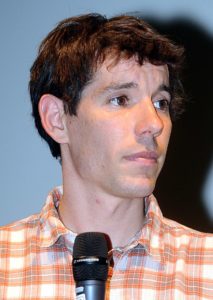
The pursuit of high performance can take on a variety of meanings, depending on the discipline, the field, or the goal. For the likes of Phillipe Petit and Alex Honnold, a high-performance mindset can take on a literal sense and incorporate huge risk in their pursuit of mastery.
Petit became famous for his “sky walk” between the towers of the World Trade Centre (WTC), New York in 1974. It was a dream he held for 6 years, and in the 3 months leading up to the event he visited the Towers 200 times, meticulously planning the 400-metre high performance.
Thirty-three-year-old Alex Honnold is a modern day Petit. His recent endeavour to scale El Capitan without a harness was brilliantly captured in the Free Solo documentary (below) and subsequent TED Talk. El Capitan is a 1,000-metre flat face granite rock, located in Yosemite National Park in California. The footage provides insights into Honnold’s mindset around risk, expanding his comfort zone, and building confidence through practice and visualisation.
Foundation for high-performance

Honnold started indoor climbing at aged 10 and built his craft for a decade before applying himself in the great outdoors. His early inspiration came from free solo climbers who attempted high risk climbs without any safety equipment; simply using climbing shoes and chalk for grip. By 2008, Honnold had replicated many of the major climbing feats and began to look for new challenges.
He set his sights on the 600-metre Half Dome rock in Yosemite National Park and, after one practice run using a harness, he decided to pursue the climb. However, on the day of the free solo attempt, he made a last-minute decision to change from his practiced route. He completed the nervous climb but reflected in his climbing journal – “Do Better?” – as he wanted to become a great climber, not a lucky one.
This led Honnold to approach his adventures with a new mindset and a process that can be seen across high performing individuals and teams – plan, do, review.
High-Performance Mindset – Plan, Do, Review
In 2016, Honnold took a fall and sprained his ankle. This was a major setback in his preparation, especially with the climbing season coming to a close. However, he decided to push ahead with the climb, but on his first free solo attempt he opted out at phase 6; meaning the adventure was shelved for a further twelve months.
Expanding the comfort zone by 1%
Honnold acknowledged the high consequences of completing such a challenge. For this reason, risk mitigation was central to his strategy. Despite the dare-devil nature of the climb he was not one for taking uncalculated risks, going to great lengths to ensure his safety. An example of this is when Honnold scaled up 500 metres with a climbing partner to gather loose rocks and bring them to the ground. With his route now decided and his mind clear, he slowly expanded his comfort zone by practicing each move meticulously and, in turn, building an internalised sense of confidence. In the year leading up to the climb he practiced a “karate kick” move every night to ensure flexibility and accuracy of execution at the most challenging phase known as the Boulder Problem. Honnold had recognised that the physical challenge was something he had trained for but the need to perform under pressure required mental preparation. He developed a high performance mindset using visualisation as a technique to recreate physical sensations and memorise each move so that on the day everything would feel automatic.
Performing under pressure
At daybreak on June 3, 2017, Alex Honnold set out with his climbing shoes and chalk bag to take on his biggest challenge. Combining his learnings of the previous 8 years he pulled off the perfect performance. The result of his meticulous planning, continuous implementation and practice, along with a rigorous review process led him to successfully complete the climb in 3 hours 56 minutes.


